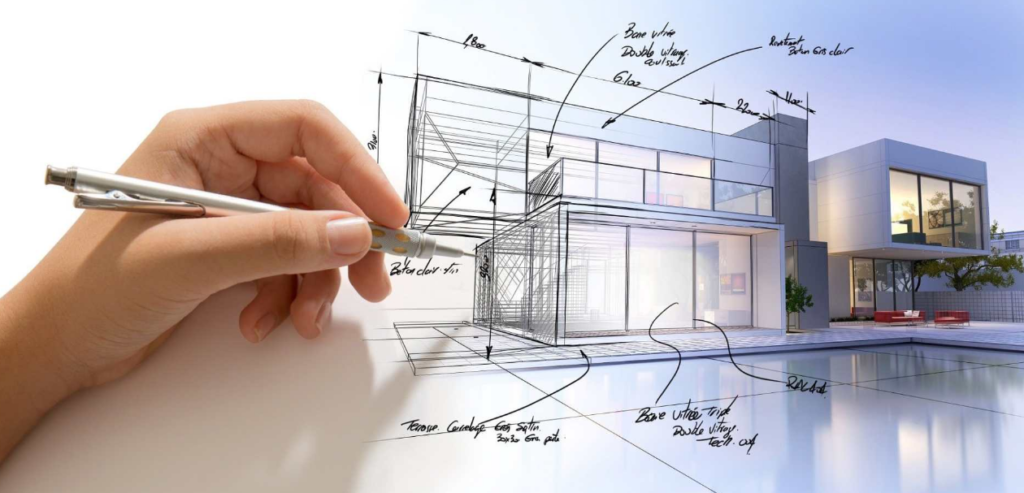Key Takeaways:
- Learn how architecture addresses limited space challenges.
- Discover innovative architectural solutions for maximizing space.
- Explore how to enhance your living environment with innovative design.
Table of Contents:
- Introduction
- Multi-functional Furniture
- Vertical Expansion
- Open Plan Living
- Enhancing Space with Light and Color
- Creative Storage Solutions
- Conclusion
Introduction
Space constraints present a common challenge across various living environments, affecting urban apartments and suburban homes. When rooms feel cramped and closets overflow, maximizing space becomes more than a preference—it’s a necessity, impacting not just how a home looks but how it functions. Fortunately, thoughtful architectural solutions offer various methods to overcome these challenges effectively and with style. By leveraging intelligent design principles and innovative planning, architecture holds the potential to transform even the most confined spaces into functional yet aesthetically pleasing environments. This article explores how architecture addresses space issues, revealing strategies that enhance functionality and appeal in everyday living.
Multi-functional Furniture
Multi-functionalMulti-functional furniture is a compelling architectural solution that optimizes limited space to optimize limited space, blending utility with style. Pieces such as sofa beds, extendable dining tables, and storage ottomans are designed to perform multiple roles within compact environments. Homeowners can minimize clutter while maximizing usability by selecting furniture that serves various purposes. An experienced Carbondale architect integrates multi-functional furniture seamlessly into home designs, aligning with specific space constraints and lifestyle needs without compromising aesthetic appeal. This approach declutters living areas and imparts versatility, quickly transforming rooms to accommodate different activities. Imagine a living room with a sleek couch that converts into a guest bed or dining table that adjusts to host intimate dinners and large gatherings. Such adaptability enhances spatial perception, making small areas more expansive and inviting.
Vertical Expansion
When horizontal space is limited, vertical expansion offers a strategic solution to optimize available rooms without extending a home’s footprint. Building upward allows property owners to utilize existing areas effectively, often transforming cramped quarters into spacious, multi-level havens. This concept has gained popularity, particularly in urban settings, where land is scarce, and the cost of expansion is prohibitive. Architectural techniques like mezzanines, loft bedrooms, and elevated storage systems capitalize on ceiling height, distinguishing these spaces with architectural flair while maintaining functionality. By designing these vertical extensions thoughtfully, architects ensure they complement the overall home aesthetic, preserving structural integrity and cohesion with adjacent living spaces. Elevating spaces with lofts or adding staircases increases the functional square footage in a subtle, nuanced way, reinventing how occupants interact with their environment.
Open Plan Living
Open-plan living has revolutionized the perception of residential space, shifting from compartmentalized rooms to fluid, uninhibited environments. By eliminating barriers such as walls between the kitchen, dining area, and living room, architects create an expansive atmosphere that defies the actual square footage. Open plans emphasize flexibility and connectivity, allowing natural light to permeate the home and enhance the sense of space. This architectural strategy fosters a seamless interaction between different areas, making entertaining effortless and everyday living more harmonious. For families, an open layout ensures improved visibility and interaction, while for singles or couples, it ranges from being a sanctuary to an engaging social setting. The absence of traditional partitions also allows interior designers to experiment with unified themes in color, flooring, and furniture, ensuring each home segment contributes to an integrated whole.
Enhancing Space with Light and Color
Light and color are formidable tools in architectural design that can significantly impact the perception of space. Natural light, in particular, possesses a transformative power that expands interiors and breathes life into underused corners. Architectural features like strategically placed windows, skylights, and glass doors draw in sunlight, creating a warm and inviting atmosphere. This inclusion of daylight enhances visual aesthetics and contributes to well-being, lifting moods and aiding productivity. Additionally, architects use color to manipulate spatial perception; lighter hues make rooms appear more extensive and open, reflecting light and creating a visually expansive environment. Contrastingly, darker tones can be employed strategically to accentuate particular features, adding depth and character. By harmonizing these elements, spaces appear more spacious and dynamically engaging, offering distinct areas of interest and interaction.
Creative Storage Solutions
Practical storage solutions are central to maintaining organization and minimizing clutter within confined living spaces. Architects innovate by designing custom-built storage that seamlessly integrates into the natural architecture of a home. Options like built-in cabinetry, under-stair storage, and recessed shelving utilize overlooked areas efficiently, providing essential storage without disrupting the interior flow. Clever architectural details transform otherwise wasted spaces into functional resources, ensuring every cubic foot serves a purpose. For instance, elevating beds to accommodate drawers or conceiving hidden compartments beneath floorboards highlight the potential of creative storage to tame clutter. These bespoke solutions cater to personal requirements, ensuring spaces remain ordered, visually appealing, and ergonomically sound. In doing so, architects deliver refined storage that enhances the overall living experience by fostering a practical and stylish environment.
Conclusion
Tackling space constraints demands more than clever furniture selection—it requires a holistic architectural approach that embraces innovative design principles. Employing methods such as multi-functional furniture, vertical expansion, open-plan living, enhanced use of light and color, and creative storage solutions, architecture offers definitive strategies to transform cramped quarters into functional, welcoming spaces. These solutions do not simply address the practical challenges of space limitations but elevate the quality and enjoyment of the home environment. By integrating these principles, homeowners can enhance aesthetics, boost functionality, and create living spaces that reflect their lifestyles, inviting comfort and fostering daily harmony.

